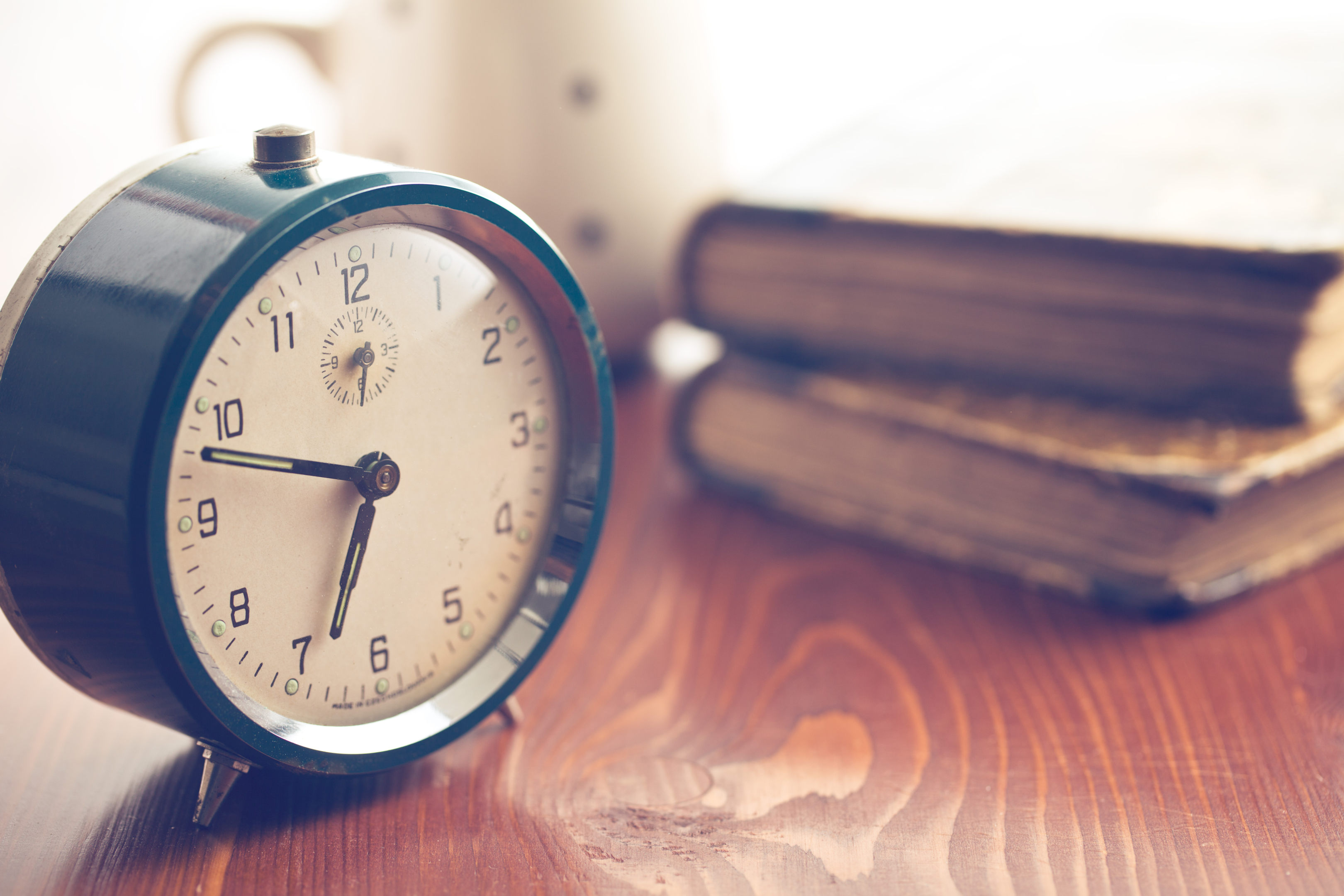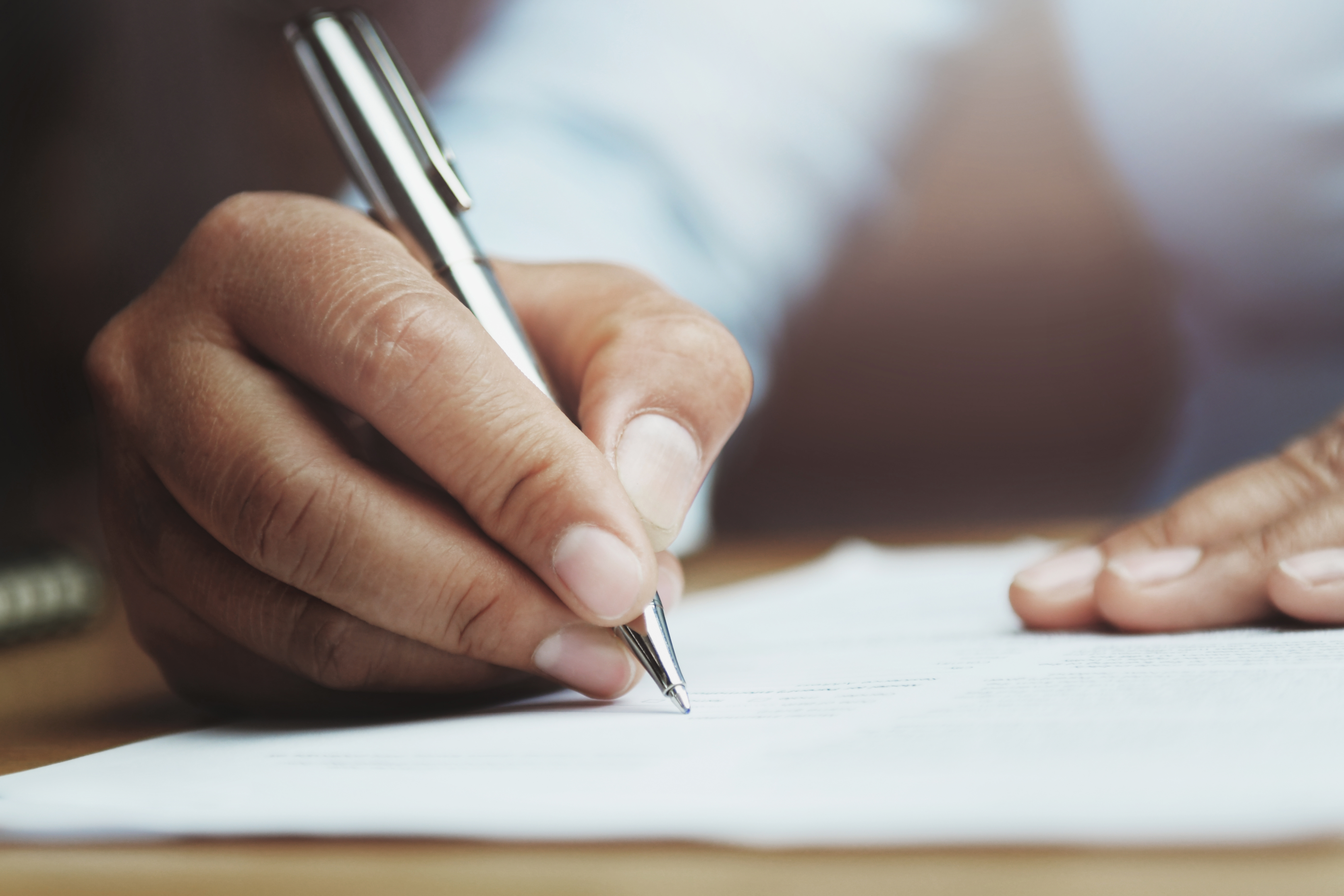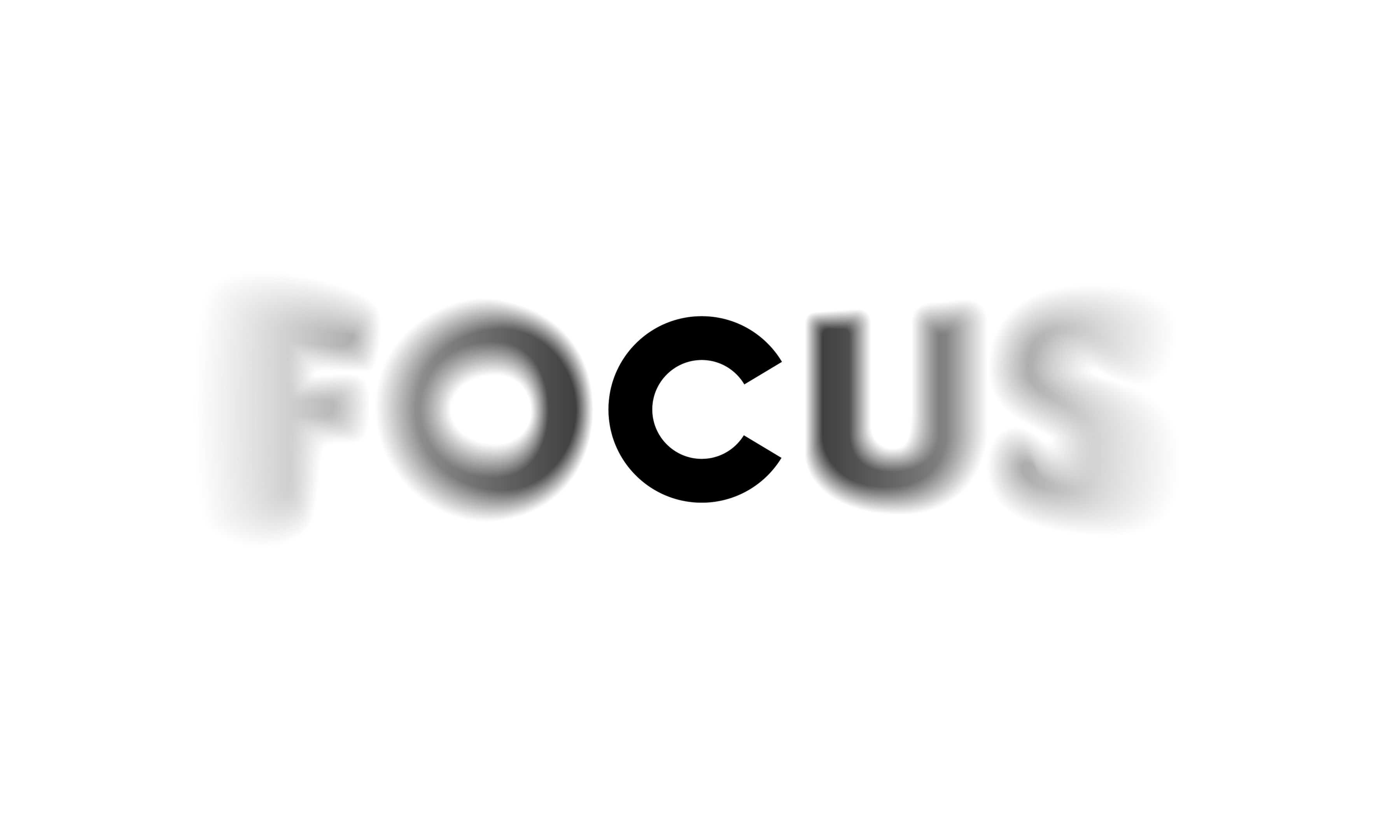When you're in charge of a business, you're all too familiar with that feeling of racing to catch up. But no matter how hard you push or how much you work, you never seem to reach the finish line.

There's always more marketing to do, more emails to send, another meeting around the corner, more prospects to qualify…
Terminal “behinderness” is an affliction that generates heart-pounding stress and makes you wonder how the most successful founders and leaders manage to be so productive while you feel like you're constantly drowning.
A lot of it comes down to how they structure their days.
Curious about how some of the top business leaders spent their time, John Rampton (CEO of Due) and Chris Stowell (VP of the International Center for Management and Organization Effectiveness) conducted a survey of 267 C-Level Executives at 163 Fortune 500 companies to find out how leaders in the industry schedule their days to stay productive.
Survey respondents included leaders of Adobe, American Express, AT&T, Bank of America, Boeing, BP, Delta, DHL, FedEx, Google, HP, John Deere, Kellogg's, Johnson & Johnson, and Twitter.
Here's how the respondents' average day stacks up — and things you could learn to make your day more productive.
THE ROUTINE WAKE-UP CALL

The average leader rolls out of bed at 6:15 a.m. to get an early start on the day. Those early hours are important because they tend to be free of most distractions and give you an opportunity to get focused.
If you really want to maximize this window of opportunity, get up just a bit earlier. A 5 a.m. wake-up time will allow you to squeeze in more time for reflection, breakfast, exercise, and getting a jump-start on communication.
Apple CEO Tim Cook takes his early mornings to the extreme by starting each day sending and responding to emails at 4:30 a.m.
Anna Wintour, Editor-in-Chief for Vogue, starts her mornings at 5:45 a.m. with an hour-long tennis match.
Kickstart Your Daily Routine With Morning Exercise
You always hear that exercise should be a part of your daily routine because it controls weight, boosts your mood, provides energy, and can help you focus. Don't ignore that advice.
Thanks to technology, we sit a lot nowadays. In fact, those working in tech-related jobs or office positions spend an average of 9.3 hours sitting each day. That doesn't take into account the sitting you do at home after the workday ends.
This type of activity is so bad for your health and energy that Harvard Business Review has called it “the smoking of our generation.”

If you think you don't have time to exercise, think again. Those extremely busy executives, CEOs, and founders fit in an average of 45 minutes of working out every day. If they can fit almost an hour of exercise into their jam-packed schedules, then you can manage a 30-45 minute workout.
In Tim Ferriss' 2010 book The 4-Hour Body, Ferriss spoke about a meeting with Virgin Group CEO Richard Branson, where Ferriss asked him how he could be more productive. Branson responded with “work out” and explained that his workout routine gave him at least 4 more hours of productive time each day.
Leading by example, former National Geographic CEO John Fahey regularly invited his employees to join him on a daily afternoon bike ride.
If you know you won't get out for a full exercise, make sure you move around throughout the day. Steve Scott, the productivity expert at Develop Good Habits, structures his day with this in mind.
“I am an advocate of the Pomodoro technique,” says Scott, “where you work for 25 minutes with a timer going. When the time is up I get up and take a quick 5-minute walk. This helps me avoid sitting for extended periods and also ensure I am as productive as possible when I am ‘on the clock'.”
Breakfast at Tiffany's
If you often can't find time for breakfast in the morning, you're not alone; about 31 million Americans don't eat anything at all for breakfast. However, 70% of the Fortune 500 leaders surveyed take the time to eat breakfast to fuel their day. Among those who eat in the morning, most will take something with them or eat on the go.
Breakfast is a crucial part of getting a strong start each day, especially if your morning routine includes exercise. Add a balanced, protein-rich breakfast to your routine and reap the health benefits, such as:
Balanced blood sugar levels, which helps maintain your energy throughout the day
Improved short-term memory and mood
Faster recovery and renewed energy after workouts
John Mackey, founder of Whole Foods, starts his day with a nutrient-rich breakfast smoothie consisting of kale or spinach leaves, soy milk, almond, oats, and fresh fruit. Take a cue from those Fortune 500 leaders and fill your tank before you head out.
If you don't have time to make a real meal, take the advice of Lise Cartwright of Hustle & Groove and make a smoothie. “A smoothie ensures that I get all the nutrients I need and kickstarts my metabolism.” says Cartwright “I then have a mid-morning snack that is my first chewing food for the day.”
Making Better Use of the Commute to Work

Being the boss gives you the freedom to work wherever you'd like, but most of the time, you're probably in the control room at your business or traveling from one location to another. That means you have a regular commute to and from work.
The average leader has a commute time of around 25 minutes, and they make good use of that time as part of their workday. Some of the ways you can be productive during your commute include:
Catching up on podcasts or listening to business-related audiobooks
Hands-free calling to get a head start on critical or time-sensitive issues
Reading and responding to emails (for those who use public transit)
Researching and preparing for presentations
Any work-related activity completed during your commute can free up precious time for other projects later in the day.
The act of simply paying attention to other people while you're on the go also offers a lot of insight and creative inspiration, which could help you be more productive at the office. “By simply keeping your eyes and ears open while you travel, you can get a grasp of what people are reading/wearing/listening to,” notes Paul Ellett on the popular Successful Blog.
Setting the Day's Pace By Eating a Frog
When some founders and executives arrive at the office, they immediately dig into their email and jump into morning meetings, leaving the more complicated tasks for the afternoon. If that sounds like your typical morning, then you're making a common mistake in managing peak productivity vs. optimal energy.
Research has proven that the first few hours after waking is the time when your brain is at its sharpest and you're more likely to stay on task. Why waste that time on meetings or reading emails?
This research is backed by other studies that found that participants perform their best early in the day.
Human psychology researchers confirm that our willpower is a finite resource. Once you deplete it, it's gone for the rest of the day. That's why you need to focus during the early hours on the highest-priority items on your to-do list.
This is why many of the leaders who responded to the survey set aside their early morning hours for creating goals and strategies for the day, week, month, or year. The average leader dedicates about 25 minutes of their morning to strategizing and planning.
During that time, they tackle important tasks and projects while holding off on emails, calls, and texts until lunchtime.
A famous Mark Twain quotation goes something like this: “Eat a live frog first thing in the morning, and nothing worse will happen to you the rest of the day.”
That should translate to using your energy and focus to get your biggest tasks or hurdles out of the way first and foremost.

It's important to note that mornings shouldn't necessarily be used for the hardest work, but for the most important work. According to Matthew Sweet of Phronetic, “mornings should be spent 1) creating, being proactive instead of reactive, or 2) doing the thing that most moves the needle in your life or business, which doesn't necessarily mean the “hardest” thing.”
That's the approach Lifehacker founder Gina Trapani takes. Each day she starts out with a list of critical items that need to be completed. When she finishes her day, she creates a new list for the next day.
Learning to say no is also an important part of managing your day and staying productive. Patty Stonesifer, former chairwoman of the Smithsonian Institution Board of Regents, has a secret for getting more done each day: know what not to do.
“…I do a short exercise with every request that comes through. I ask myself ‘If I had to do this today, would I be glad?'” says Stonesifer. “For most requests, the answer is no (because I know I should be working on the big stuff), which means I say no to most extraneous requests.”
Dealing with the Distraction of Daily Communication
Email and texting have become the dominant forms of communication for business owners. The average leader of a Fortune 500 spends around 2.5 hours each day reading and responding to emails and text messages. Some spend even more time. That's acceptable as long as it contributes to your daily productivity and keeps the workflow going.
Here are some ways the most successful leaders handle email and communication to stay productive:
Respond with brevity. Be concise in every response to reduce time spent on communication.
If a response will be lengthy or has the potential to require a discussion, make it a phone call instead.
Schedule time for emails. Leaving email open all day makes for quick responses but creates constant distractions.
Only spend time on communication when it's scheduled. Don't block out long, open windows, but rather small windows throughout the day to respond.
Hire a full-time or virtual assistant to handle your communications for you.
One great tool to get you into your “zone” is focus@will, a desktop and mobile app that plays music that's scientifically designed to make you more productive. Lise Cartwright uses the phone app daily; “The music is backed by a ton of research and helps to keep your brain focused on one task.” says Cartwright.
“At the end of a 60-minute focus period, a bell will ‘ding' which signals your brain that it's time to get up and move around. I'll then take a 5-minute break where I'll get up out of my chair, leaving all technology on my desk, and I'll go for a walk, do some stretches or mediate.”
Taking Control of Meetings
The average Fortune 500 leader spends 2.5 hours per day in meetings. If you look at the previous statistic on time spent on email and the phone, 5 hours or more per day may not be allotted to direct work productivity, unless you design meetings and modes of communication to be highly productive.

In a 2011 interview with Wired, Google cofounder Larry Page discussed his decision to get rid of his assistant due to the excessive scheduling of undesired meetings. “Most people aren't willing to ask me if they want to meet with me,” Page said. “They're happy to ask an assistant.” After that, if someone wanted a meeting, they had to approach Page directly.
For those of us who can't avoid meetings, productivity blogger and professional organizer Carson Tate offers 5 words to live by for your next meeting: “Short, focused, and standing up.”
To kick things off and keep things on track, she also recommends “always providing an agenda in advance of the meeting.”
Creating Structure and Order with a Winning Team
More than 50% of Fortune 500 leaders believe that teamwork is essential to meeting productivity goals, and they spend time each day directly engaging with teams and employees on their tasks. As a result, they only spend about an hour and 45 minutes on average on personal tasks and projects.

Cultivating teams and boosting collaboration are some of the most important skills of a successful, strategic leader. Team effort is important for any company with multiple employees to thrive, and it can significantly impact business strategies and productivity. The most effective leaders directly engage their teams and spend a good chunk of their time supporting employees and encouraging them to succeed.
Costco CEO Jim Sinegal is a normal guy loved by his employees. His name tag simply says “Jim,” he works in a plain office with no walls, and he has a single-page contract that clearly states how even he can be terminated for not getting his work done.

He even takes a modest six-figure salary, because he figured that he shouldn't earn more than 12 employees working the sales floor. By working closely with employees and focusing on collaboration each and every day, Jim has grown the Costco brand at an impressive rate.
Bill Keller, former executive editor for The New York Times, understood that it took an exemplary team to get things done, and as such, he relied heavily on those who worked with him. “Of course,” said Keller, “that only works if you surround yourself with smart, competent people.”
A Daily Refueling Routine
Leaders of some of the most well-known companies may not have the best dietary habits: 52% described their diet as “somewhat healthy.” Still, many understand the importance of keeping their energy up throughout the workday:
41% eat a snack in the morning
45% work an afternoon snack into their schedule
85% of leaders take a break for lunch in the middle of the day
Taking those breaks isn't just about consuming nutrient-rich foods to maintain energy. Breaks for snacks and lunch are also some of the best times to reflect and strategize for the remainder of the day.

It's also a good time to work on personal tasks. Jana Eggers, former executive for Intuit and cofounder of SureCruise.com, recommends dedicating some time each day to an activity or hobby that you find fulfilling.
“A fulfilling hobby can also be a healthy distraction from the day-to-day grind,” says Eggers. “It can be cooking, gardening, singing…something that you can focus on and master. The important thing is to pick something big and be dedicated to it.”
From Gaming to Gardening, Personal Development is Important
Maintaining some sense of work/life balance is crucial. Even the most successful Fortune 500 leaders and executives spend an average of an hour and 45 minutes each day on personal projects or tasks that are important to them.
That doesn't necessarily mean that an entire block of time has to be set aside for personal development.
It can be scattered throughout the day, like the example above of using your break or snack time for personal projects.
Ram Shriram, one of Google's founding board members, recommends keeping a diary to improve your personal performance. In an interview with Business 2.0, he said that you can't focus on beating yourself up. Instead, use the diary as a point of growth to “create a kind of manual for what has worked and what hasn't in your business. Documenting it ensures we'll always remember it.”
This practice doesn't have to be limited to workplace productivity, as it can improve other aspects of your personal life, too. When something comes to mind, find a pen and get it on paper.
Get it out of your head so you can focus on more important tasks.
Stephen Gillett, former CIO of Starbucks and “Guild Master” for Google[x] recommends that you fit some multiplayer gaming into your daily routine and use lessons from gaming to teach you how to be a more effective leader.

In an interview with Wired, Gillett talks about how his position as a top Guild Master in World of Warcraft translated to a total immersion course in leadership: “I used to worry about not having what I needed to get a job now. Now I think of it like a quest; by being willing to improvise I can usually find the people and resources I need to accomplish the task.”
Researchers and scientists have long theorized that multiplayer games can teach players both leadership and problem-solving skills in addition to sparking creativity and innovation.
Some of the most successful Fortune 500 executives make time for games like World of Warcraft – and so can you.
End the Day By Winding Down and Letting Go

Every workday comes to an end at some point. For some executives, that means switching off when they leave the office. Others keep working until it's time to sleep, which is around 11:40 p.m. for most Fortune 500 leaders.
How time is spent outside of typical working hours can vary, and it's a little different for everyone. Carol Smith, CRO for Harper's Bazaar, has a useful tactic for balancing productivity and free time. She comes into the office on Sunday for around 4 hours to tackle a lot of work without distractions, “…so when I come in on Monday, it's like my vacation day.”
Before leaving the office each night, Kenneth Chenault, CEO of American Express, takes time to reflect and write down three things that he wants to accomplish the next day. This effectively sets up his attack strategy for the morning.
According to Matthew Sweet, this also serves as a “book-end” that signals the end of the day. Sweet recommends having “one simple activity you do every afternoon or evening that signals the end of your day.” In fact, Sweet has a very similar book-end routine to Chenault; “I take out a 4″ x 6″ index card, jot down what I need to do tomorrow, and place it on my desk.”
But what about when it's time for the work to finally end?
Arianna Huffington refuses to burn the midnight oil. In an interview with Slate she says, “My single most-effective trick for getting things done is to stop doing what I'm doing and get some sleep. There is nothing that negatively affects my productivity and efficiency more than lack of sleep. After years of burning the candle on both ends, my eyes have been opened to the value of getting some serious shut-eye.”

At the end of the day, AOL CEO Tim Armstrong flips the switch and puts his work away. After arriving home from the office around 8 p.m., Armstrong spends time reading to his daughters. “They usually… get two or three books.”
Bill Gates takes a similar approach and believes that reading during the nighttime hours is part of the routine process of winding down to sleep. He reads topics ranging from public health to shipping containers to pull his mind away from the business.
Before finally shutting down each day, Buffer CEO and co-founder Joel Gascoigne relaxes with a 20-minute walk in the evening to get exercise and disconnect from the daily grind.

“This is a wind-down period, and allows me to evaluate the day's work, think about the greater challenges, gradually stop thinking about work, and reach a state of tiredness,” he writes in a post on his blog.
Facebook's COO Sheryl Sandberg believes that eliminating nighttime distractions will help you focus more on sleep, so she completely shuts down her phone at night even if, as she admits, it's “painful to do so.”
Make the Most of Your Day
As you can see from some of the best, brightest, and most successful leaders' daily routines, structuring your day to achieve maximum productivity isn't just about what you do or how you do it between the hours of 9 and 5. The most accomplished business leaders create rituals for their days, starting from the moment their feet touch the floor in the morning, to the moment their head hits the pillow at night.
While everyone has a different routine that works for them, it's important to formulate and sustain habits that will improve your work/life balance, professional focus, and personal development. These are all examples you can learn from and replicate in your daily schedule to achieve greater success both at work and at home.
How does your day compare to that of these Fortune 500 leaders? Share your thoughts with me in the comments below:
Find this article helpful?
This is just a small sample! Register to unlock our in-depth courses, hundreds of video courses, and a library of playbooks and articles to grow your startup fast. Let us Let us show you!
Submission confirms agreement to our Terms of Service and Privacy Policy.